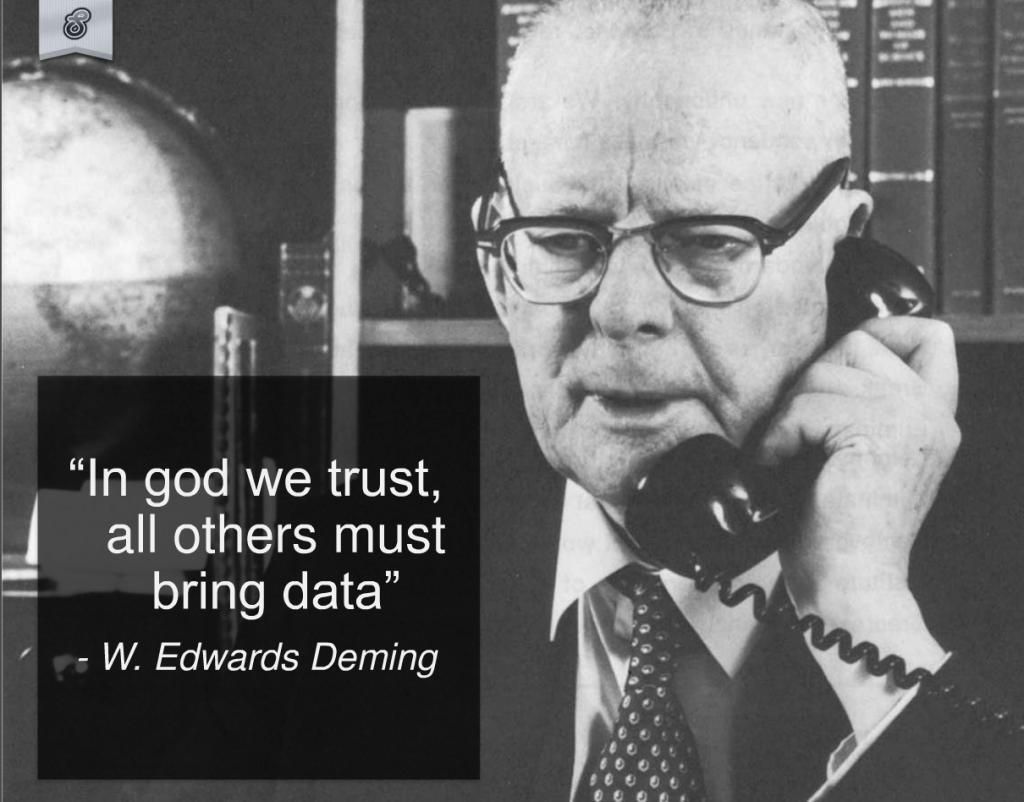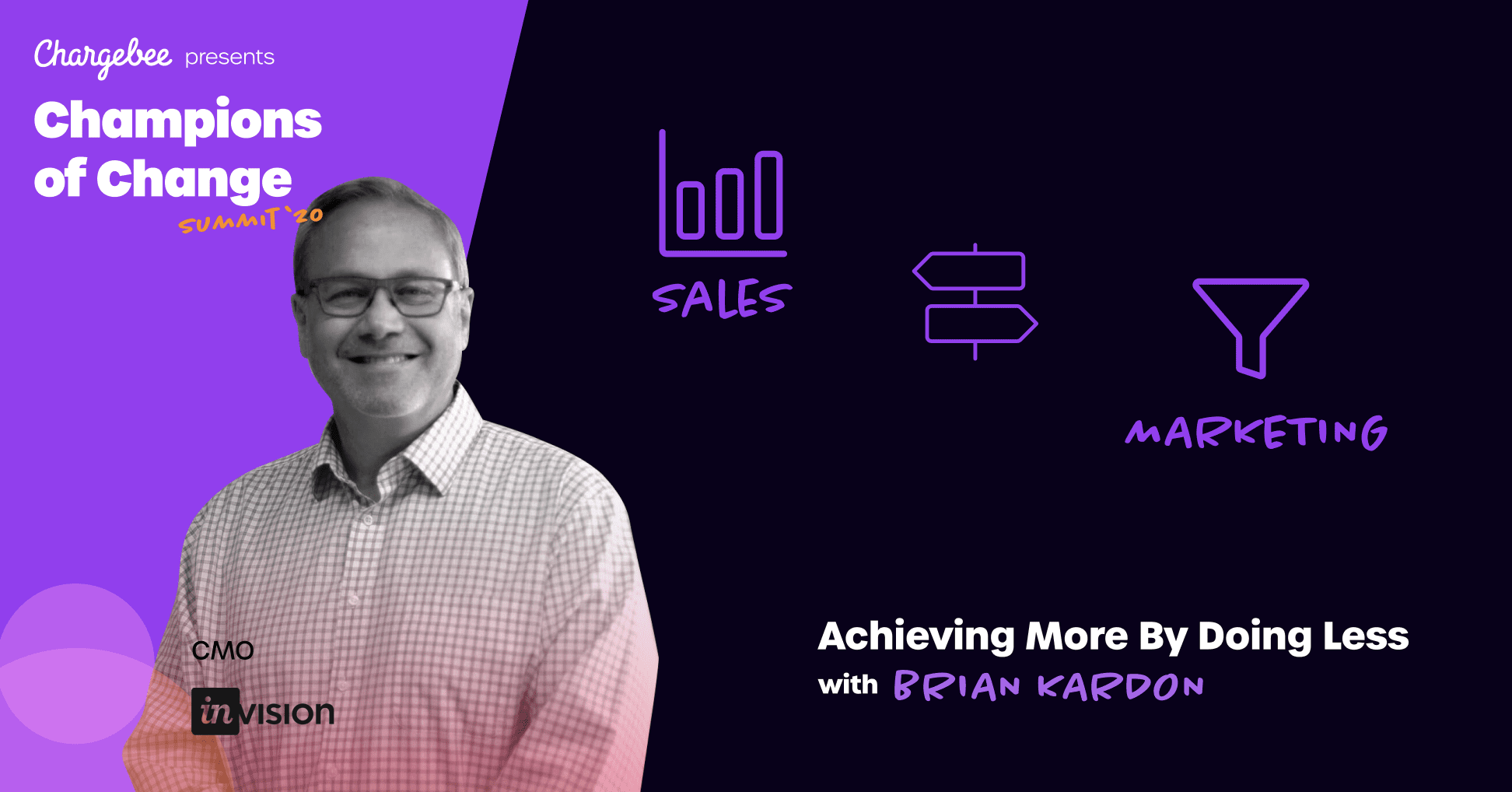Everything was going great for Brian Kardon. He had joined Invision in September 2019 as the CMO. Two months in, one day, the CEO walked up to him and told him that he is going to make a change in sales. Usually, it meant getting rid of a salesperson or some form of team realignment, but what happened next was something Brian didn’t see coming.
The CEO told Brian that now on both the sales and marketing would report to him. The dream (or nightmare) of sales and marketing aligning had finally come true. Brian was very excited as this sort of thing is rare, and he had never had such an experience before. Even though this alignment benefits companies in most cases, marketing and sales are not always on the same page, leaving huge chasms to develop.
In our Champions of Change series, we speak with Brian Kardon, the CMO of Invision, on how companies can achieve more balance and alignment by doing less. In this process, we identify three pillars that hold up the success of any software business. They are,
- The Software
- The Employee
- The Customer
1. The Software
The Changing Landscape
“I’m old enough to remember that every company wanted to be a dot com company. Next, every company wanted to be a cloud company. Now every company is seen harnessing big data, and the latest to this addition is AI and ML. Now every company is either a part of it or wants to be a part of it,” reminiscences Brian Kardon, CMO of Invision.
We have software today for every function we want to perform, from automating our finances to reminding us when to have our next cup of water. But things weren’t the same, even a decade ago. Brian recalls things beginning with a simple email service. The software he was using back then was Mailchimp/Constant Contact.
The significant change in software came in 2005 when marketing automation solutions took the software industry by a storm. Then the industry was split between Marketo, Eloqua, and Hubspot. As the Martech market started booming, the next wave was around integrations that solved other pain points. Even then, it was difficult to have open APIs in the early days, and specific codes had to be written for any change.
In today’s landscape, many solutions offer a lot more flexibility to the user. There are individual solutions and complete solutions. Brian says it is essential for marketers to decide if they need to buy into these cloud solutions (like Salesforce) or individual integrations (like Adobe with Marketo).
Another trend that is shaping up is artificial intelligence (AI). AI thought bots could be used to simulate human interaction. Bots can qualify leads quicker than your typical BDR team. Brian says, “There is an ongoing conversation on whether humans would win or bots would win, but that is a wrong conversation. Focus on how machines can assist humans better. Every Martech that embraces AI would have natural and organic growth.”
So think ahead and decide if salespeople must make every touch, or can machines be trained to do it?
What is a good marketing stack?
“I call it the ‘roach motel’. Technology goes in, but nothing comes out.”
Marketers always seem to want the next cool thing. They are usually more creative, and in search of the next innovative thing, they leave behind many old things to dust and rot. Brian swears by one thing. He says, “I always find companies with stacks that have great technologies. They would be using 50 or 100 tools/technologies, but their process wouldn’t have improved significantly. I call it the roach motel – new technology goes in, but nothing comes out. One thing I tell my team is that, if I add a technology, something needs to come out.”
In the case of software, many start as point solutions. The solutions are for specific pain points and thus called point solutions. They face the risk of being replaced when they stay as point solutions. For example, Invision uses Pendo for its in-app messaging feature. But Pendo’s solutions have been able to replace some of the other applications they have been using. So, this is something software companies should look out for.
Frenemies – Competing and Partnering
One of the pictures that broke the internet in 2017 was Sundar Pichai, CEO of Google, and Tim Cook, CEO of Apple, dining together in Palo Alto. Everyone knows that they are fierce competitors, but they also needed each other’s help to sustain themselves.

Credits: CNBC (here)
To negotiate choppy waters, one must be open to the idea of working with competitors. Closed systems do not work. Especially in SaaS, the solutions are built not necessarily for a suite, and there could be a lot of overlap. Here, collaboration is what forms the backbone of the ecosystem.
But, if you can’t make it to the best of suites, you can still be the best of breeds to win over the competition. As best of breeds, Brian suggests that the best way to market oneself is by showing your customer feedback.
You cannot please your customers until they get full value. According to Brian, this is the sweet spot the salesperson should pursue from the beginning to achieve more by doing less. He says, “There isn’t an account that a salesperson doesn’t like. They want all the accounts they can get. But make sure your salespeople conduct a predictive analysis to find which accounts would decide to do business with you. When I was at Eloqua, we found traction with sports teams and developed a solution called Allstar. It was the same product, but with a new wrapping within a year, we sold to 50 professional sports companies. Focus matters, so focus on a few accounts to create a big impact.”
2. The Employee
“I don’t like it when people take months to build and launch. I think it’s old school; I like this idea of constantly tinkering and making it better.”

Credit: Pinterest
Brian says that every marketer should be left and right-brained. But according to him, you also need a good narrative that holds it all together. “It is all about the words. What are the first few lines in your email? If you’re only focused on numbers, you forget what drives performance. What drives performance is engagement, and that is done through good storytelling,” he says.
However, many companies like to tell their stories in their words. They talk about how much their company helped other businesses. The truth of it is your company could be solving global problems but might still lack getting traction. This is because the best stories are the ones that come from customers in their own words. When you make the customer the champion, it resonates the most.
“The trick is to use your customer’s words. Use the phrases the customer uses. The best stories I have taken directly word for word from the customer’s pain points and what they are trying to get done. The other main thing is that marketers need to stop falling in love with their campaigns.”
Brian says, “Marketers need to be data-driven; they seem to fall in love with their campaigns. They shouldn’t do that because only half your campaigns perform above average.” But marketers need to be fearless and have an aptitude for experimentation. He says, “I was always an early adopter of technology. You don’t have to make too many sweeping changes but always conduct small tests. I’m not too fond of it when people take months to build and launch. I think it’s old school; I like this idea of constantly tinkering and making it better. On Invision, we have hundreds of tests running; everything is AB tested from mails to bots”.
3. The Customer
Understanding your customers with historical data
In the book, Selling to Zebras, Chad Koser and Jeff Koser talk about businesses that can close deals faster, more accessible, and more profitably. When finding your Zebras, you need to go through several years of historical data. You need to understand the characteristics the companies exhibit when they buy or when they are not keen to buy. This sort of analysis can also be applied for attrition.
Adapting to the changing behavior of your customer
“Humans don’t want to talk to humans. I think we are in the pivotal part where substituting humans with bots can give better experiences.”
Our behavior is fundamentally changing, and it’s changing for the good. Brian quotes one of his experiences to highlight this. “At Invision, we recently automated some processes where we needed to give a customer a callback; we replaced human beings with a bot. I called a few customers later because I thought it was a mistake. Figures, humans don’t want to talk to other humans. They seemed unperturbed with the change!”
To know more, you can check out the Champions of Change series here.





